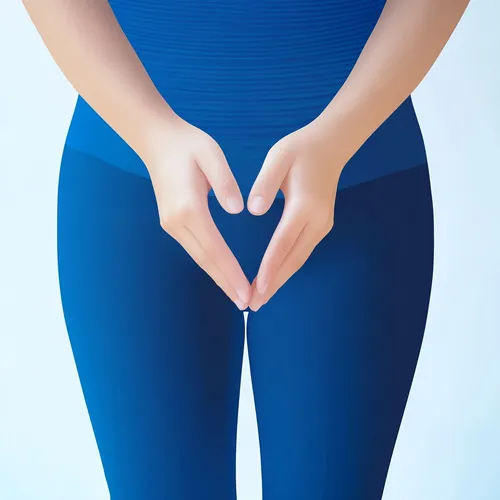What’s the Deal with Incontinence?
Ever had that “gotta go” feeling hit you at the worst possible moment? Well, for some folks, that’s not just an occasional inconvenience – it’s a daily struggle. We’re talking about incontinence, and it’s more common than you might think!
Incontinence isn’t just about having an overactive bladder. It’s when you can’t hold your pee until you reach the loo. Now, I know what you’re thinking: “That sounds embarrassing!” And you’re right – it can be. That’s why many people suffering from incontinence keep mum about it. But here’s the kicker: if left untreated, it can lead to all sorts of nasty stuff like rashes, depression, and even infections. Yikes!
But don’t worry! Incontinence isn’t some inevitable part of getting older, and in most cases, we can kick it to the curb with the right treatment. So let’s dive in and learn more about this pesky problem!
The Ins and Outs of Your Waterworks
Before we get into the nitty-gritty of incontinence, let’s take a quick tour of your urinary system. Think of it as a fancy plumbing system in your body.
You’ve got two kidneys (the factories), two ureters (the pipes), a bladder (the storage tank), and a urethra (the exit pipe). There’s also a nifty little muscle called the sphincter that acts like a valve, keeping everything in until it’s time to go.
Your kidneys are working 24/7, churning out urine that travels down the ureters and into your bladder. As your bladder fills up, your brain starts getting “Hey, time to go!” signals. Most of us answer nature’s call about 4-8 times a day, depending on how much we’ve eaten, drunk, or sweated.
Why Does Incontinence Happen?
Incontinence can sneak up on you for various reasons. Sometimes it’s just a temporary hiccup – maybe you’ve got a bladder infection like cystitis, or it could be a side effect of some medication you’re taking.
But sometimes, it’s a bit more persistent. Your pelvic floor muscles (the ones surrounding your bladder) might have weakened. This often happens after childbirth or pelvic surgery. For the ladies, the dreaded menopause can also cause issues, as the lack of estrogen can weaken the urethra.
And gents, don’t think you’re off the hook! An enlarged prostate can also lead to incontinence.
The Many Faces of Incontinence
Incontinence isn’t a one-size-fits-all problem. There are actually several types:
- Stress Incontinence: For ladies, this is the most common type. It’s not caused by emotional stress, but by physical pressure on your bladder. Laugh too hard, sneeze, or pick up something heavy, and oops! A little leak.
- Urge Incontinence: Ever felt like you needed to pee RIGHT NOW? That’s urge incontinence. Your bladder’s basically crying wolf, telling your brain it’s full when it isn’t.
- Overflow Incontinence: This is when something’s blocking the exit, so your bladder can’t empty properly. It’s like trying to pour water out of a bottle with a tiny hole – it just keeps dribbling.
- Functional Incontinence: This final one’s not about bladder control, but about getting to the toilet in time. Maybe you’re in a wheelchair, or you have Alzheimer’s – your bladder works fine, but other factors are getting in the way.
And if you’re really unlucky, you might have a mix of these – that’s called mixed incontinence. Fun times!
How Do GP’s Diagnose It?
If you’re dealing with incontinence, you should not suffer in silence! Your doctor can often work out what’s going on just by chatting with you about your symptoms. They might also want to take a peek at your pelvic area (don’t worry, they’ve seen it all before!).
Sometimes, they’ll run a few tests. They might ask for a urine sample to check for infections, or they might want to take some pictures of your insides with x-rays or ultrasounds. There are also some tests they can do to see how your bladder’s behaving.
Tackling the Tinkle Troubles
The good news? There are lots of ways to treat incontinence!
When it comes to stress incontinence, strengthening your pelvic muscles is key. Your doctor might show you some exercises (known as Kegel exercises) or refer you to a physiotherapist. It’s similar to hitting the gym, but you’re focusing on your bladder!
If exercises aren’t cutting it, surgery is an option. They can lift and strengthen your bladder – it’s like a facelift for your waterworks!
For urge incontinence, there are medicines that can calm down your overactive bladder. Your doc might also suggest “bladder training” – it’s like teaching your bladder to be patient!
If you’re dealing with overflow incontinence, the treatment is all about removing whatever’s causing the blockage.
And for functional incontinence, it’s about making it easier to get to the loo when you need to. This might mean keeping a commode nearby or making sure your clothes are easy to take off.
DIY Incontinence Management
While medical treatment is important, there’s plenty you can do to help yourself:
- Cut back on caffeine – it makes you pee more!
- Watch your weight – extra pounds can put pressure on your bladder.
- Empty your bladder regularly – don’t wait until you’re bursting!
- Exercise those pelvic floor muscles – squeeze and release!
- Wear protective pads to keep your skin dry.
- Stay active – a good walk can do wonders!
- Dress for quick access – no complicated outfits!
- Go easy on the booze – it makes your kidneys work overtime.
Remember, incontinence might be common, but it doesn’t have to rule your life. With the right treatment and a few lifestyle tweaks, you can get back to living life without worrying about surprise leaks. So don’t be shy – talk to your doc and take control of your bladder!
Photo “Incontinence” by Anthony Cunningham for Zoom Health
Zoom Health is a leading UK supplier of Home Health Tests and Earplugs





